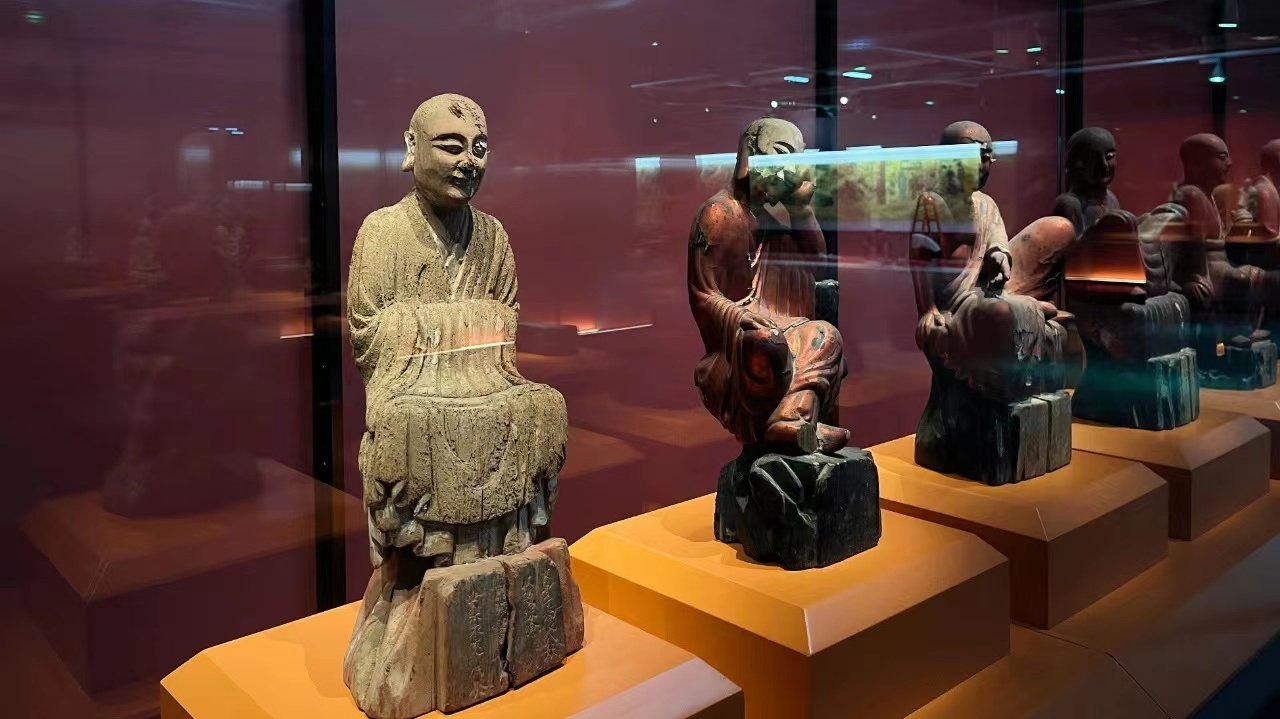The Nanhua Temple, a venerable site in Shaoguan, South China’s Guangdong Province, recently became the focal point of cultural and religious heritage during the first Guangdong-Hong Kong-Macao Greater Bay Area Chan Buddhism Culture Festival. The temple, a beacon of Chan (Zen) Buddhism, launched the “Passing Down Dharma: Nanhua Buddhist Temple in The Past 1500 Years” exhibition, marking a significant event in the preservation and celebration of Buddhist culture.
This exhibition, showcasing 53 treasured cultural relics, many of which are being displayed for the first time, aims to strengthen cultural and religious exchanges within the Guangdong, Hong Kong, Macao regions, and the Belt and Road partner countries. The event is seen as a cornerstone in enriching the humanistic essence of the Greater Bay Area, fostering a deeper understanding and appreciation of Buddhist traditions and their historical significance.
Among the exhibition’s highlights is a bronze statue of the Buddha from the Northern Qi Dynasty (550-557), showcasing the artistic and spiritual heritage of early Chinese Buddhism. This ancient statue is a testament to the temple’s long-standing role as a custodian of Buddhist art and philosophy.
Another notable exhibit is a wooden figure of a Buddhist monk from the Northern Song Dynasty (960-1127). Characterized by its thick and simple carving style, this statue stands as an outstanding representation of the era’s wooden carving statues, specifically those depicting the five hundred Buddhist monks.
The Nanhua Temple itself is deeply rooted in the history of Chan Buddhism. Established in AD 502, it has been the cradle of southern Zen, propagated by Master Huineng (AD 638-713), the highly revered Sixth Patriarch of Zen Buddhism. The temple’s storied walls and serene ambiance have been a witness to the evolution and spread of this profound spiritual practice.
Among the temple’s most revered treasures are the “Da Zang Sutra,” a collection of Buddhist scriptures, various decrees, and a cassock, all of which embody the rich legacy of Buddhist culture and philosophy. However, perhaps the most poignant and significant relic is the mummified body of Master Huineng himself. Preserved in the Six Patriarch Hall, the mummy sits in a cross-legged position, measuring about 80 centimeters in height. This reddish-brown painted mummy, resting on a sheet of linen cloth, offers a unique and tangible connection to the revered master, drawing devotees and scholars alike.
This exhibition not only serves as a window into the past 1500 years of Chan Buddhism but also acts as a bridge, connecting diverse cultures and communities through the shared heritage of Buddhism. It underscores Nanhua Temple’s pivotal role in the propagation and preservation of Buddhist teachings and its continuing influence in the spiritual landscape of the Greater Bay Area and beyond. Through this exhibition, the temple reaffirms its commitment to the transmission of Dharma, ensuring that the profound teachings of Chan Buddhism continue to enlighten and inspire future generations.
READ MORE:
